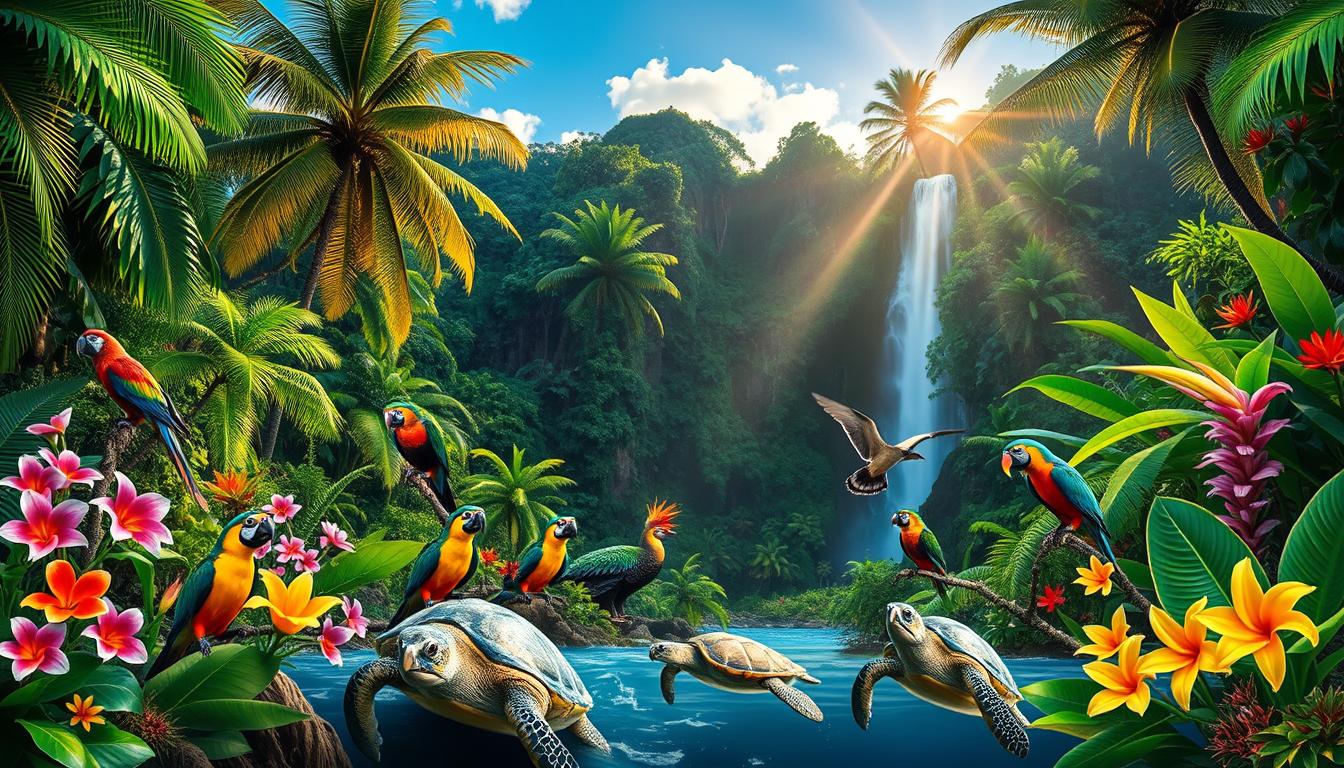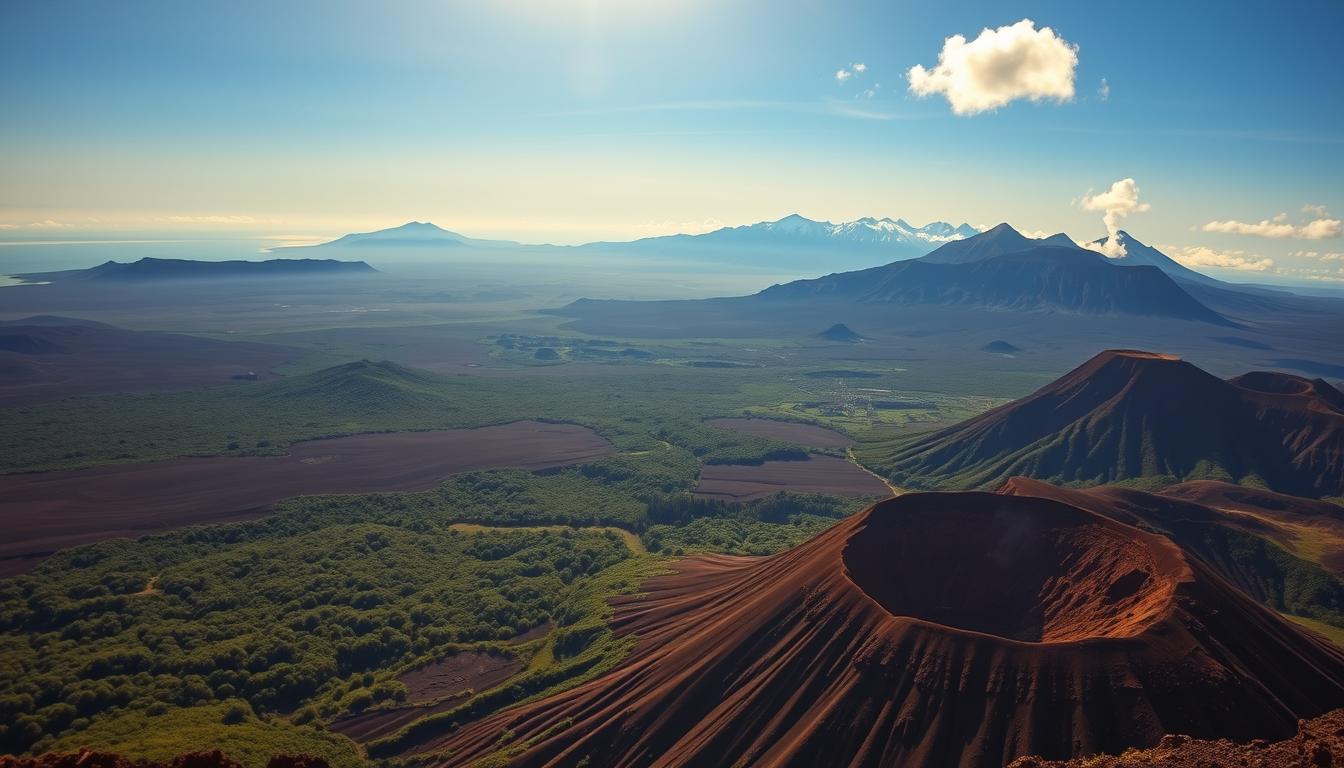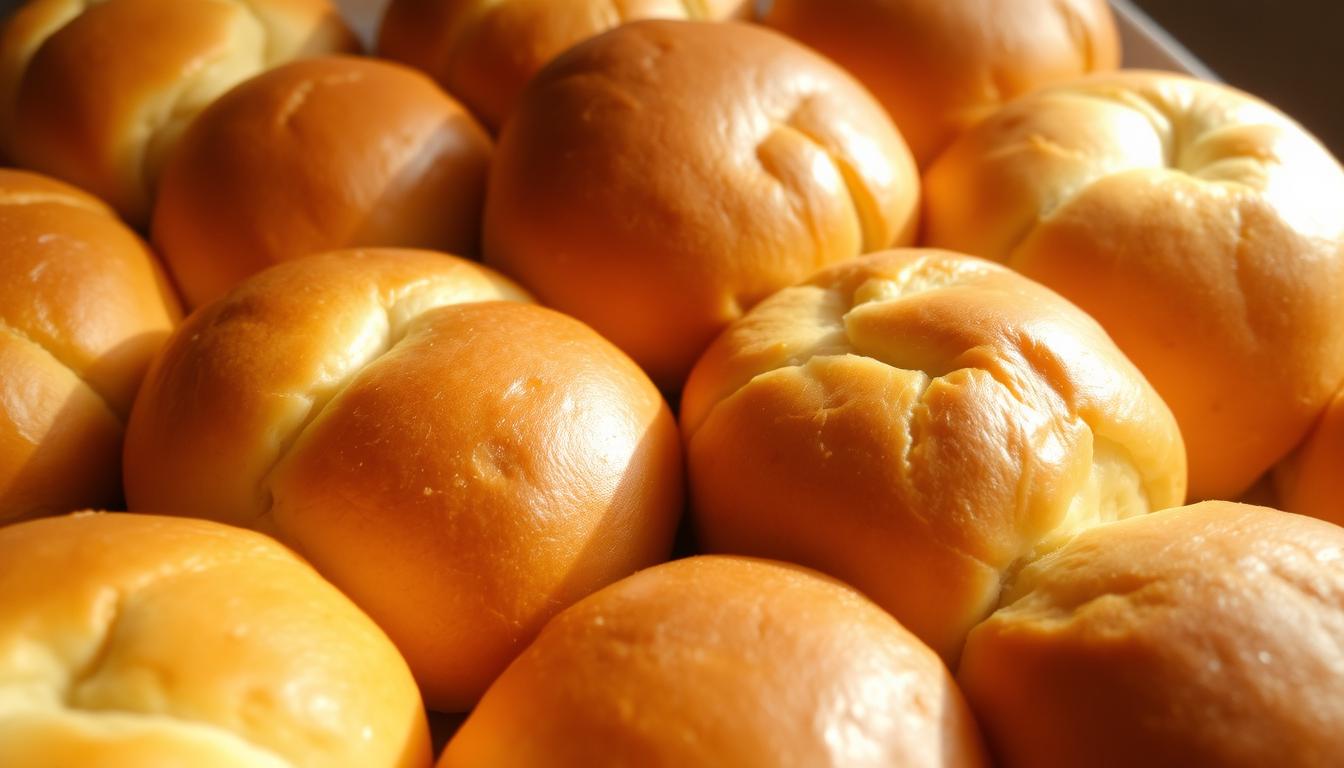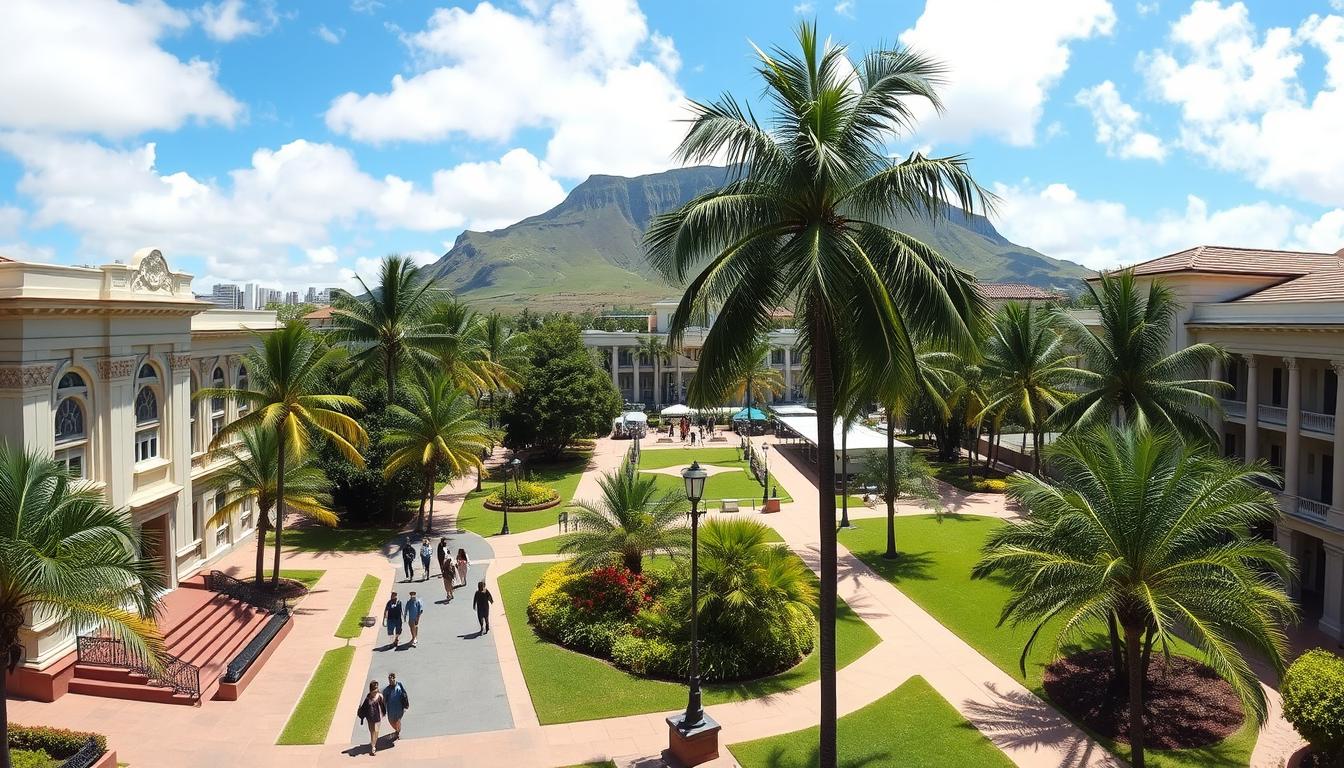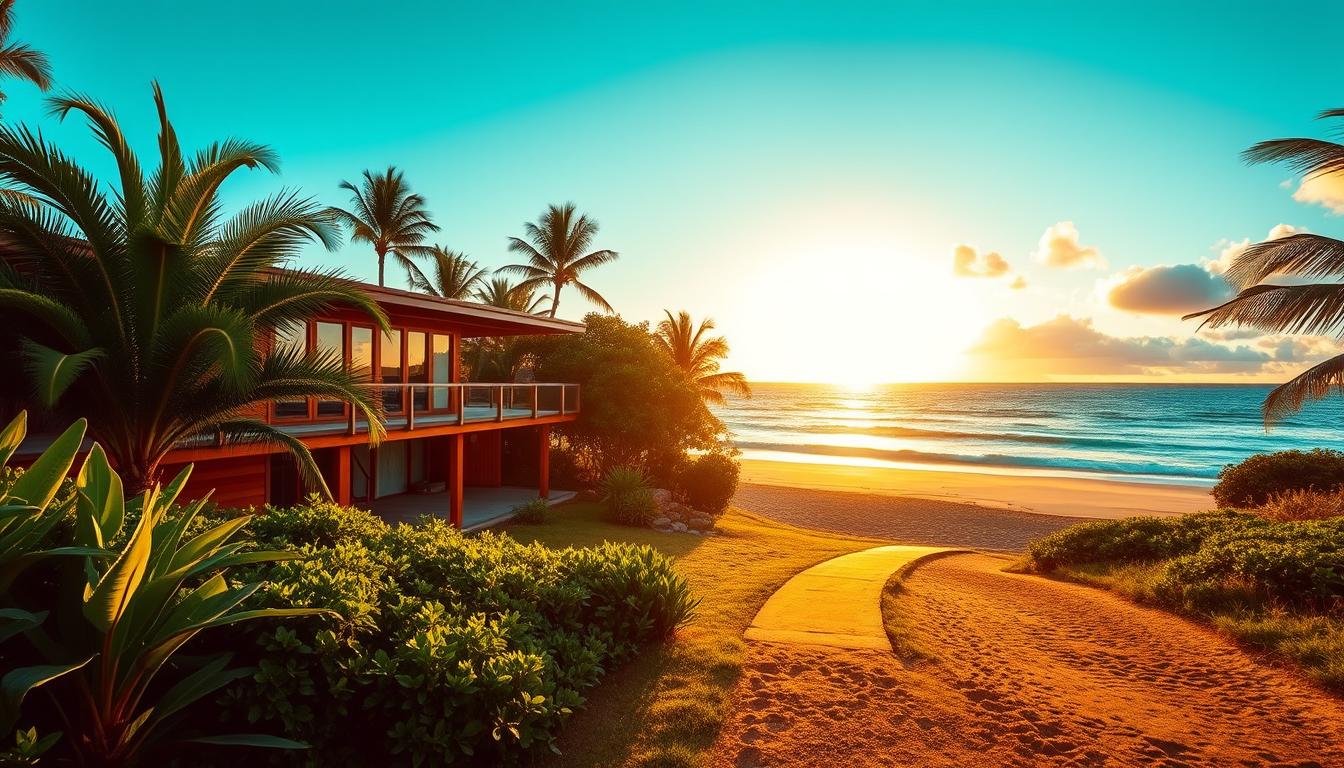Hawaii is celebrated for its breathtaking natural beauty, boasting diverse ecosystems, native species, and stunning landscapes. The islands are home to majestic volcanoes, lush rainforests, pristine beaches, and starry night skies. This article will delve into the island’s iconic wildlife, endemic flora, and the efforts to conserve these treasures. It aims to reveal the hidden wonders that make Hawaii a paradise for nature lovers.
Key Takeaways
- Hawaii is a biodiversity hotspot with a wide range of endemic species and tropical ecosystems.
- The islands feature iconic wildlife like the Hawaiian hoary bat and the state bird, the nene goose.
- Hawaii’s diverse landscapes include majestic volcanoes, lush rainforests, and pristine beaches.
- Sustainable tourism and conservation efforts help protect the islands’ natural wonders.
- Ecotourism experiences allow visitors to connect with Hawaii’s unique flora, fauna, and cultural traditions.
Explore the Natural Treasures of the Hawaiian Islands
The Hawaiian archipelago is a true marvel, formed by volcanic activity and isolated in the vast Pacific Ocean. This geographic isolation has given rise to a remarkable array of unique landscapes and diverse climates. From lush tropical rainforests to arid deserts and snow-capped peaks, Hawaii is a biodiversity hotspot. It is home to thousands of endemic species found nowhere else on Earth.
Learn about the Unique Landscapes and Climates
The Hawaiian Islands experience an extraordinary range of climates, with 11 different climate types all in one place on the Big Island. From the tropical forests of Hilo to the arid deserts of Kona, and the snowy slopes of Mauna Kea, the diversity of landscapes is truly astounding. The Mauna Kea peak, for instance, is often blanketed in snow during the winter months, offering skiing and trekking opportunities.
Discover Endemic Species and Biodiversity Hotspots
- Hawaii is a biodiversity hotspot, home to over 400 species of inshore and reef fishes, as well as the iconic nēnē (Hawaiian goose), Hawaiian monk seals, and a diverse array of colorful tree snails and native plants like the ‘ōhi’a lehua and hāpu’u ferns.
- The islands feature several Marine Life Conservation Districts, such as Hanauma Bay, Pūpūkea, and Waikīkī, where visitors can snorkel and observe the vibrant coral reefs and abundant marine life in their natural habitats.
- Humpback whales migrate over 3,000 miles from Alaska to the warm waters of Hawaii to give birth during the winter whale-watching season.
- The Hawaiian Monk Seal, one of the most endangered seal species in the world, has an estimated population of around 1,400, with 300 inhabiting the waters surrounding the main Hawaiian Islands.
The natural wonders of the Hawaiian Islands are truly awe-inspiring. They offer visitors a chance to immerse themselves in a world of island biogeography, endemic flora and fauna, unique landscapes, diverse climates, and biodiversity hotspots.
Majestic Volcanoes and Lava Flows
The Hawaiian Islands were shaped by volcanic power, a force that’s still evident today. Visitors can explore the unique landscapes of Hawaii Volcanoes National Park. Here, the active Kīlauea and Mauna Loa volcanoes offer a captivating display.
Hike Through Hawaii Volcanoes National Park
Put on your hiking boots for a journey through the park’s trails. You’ll see molten lava flowing from the earth. These landscapes, shaped by nature’s relentless forces, reveal the dynamic nature of the Hawaiian Islands.
Witness the Power of Nature at Kīlauea and Mauna Loa
- Kīlauea Volcano: Height 4,091 feet, Age 300,000-600,000 years old, Last eruption January 3, 1983-present
- Mauna Loa Volcano: Height 13,679 feet above sea level, Age 700,000-1 million years old, Last eruption March 1984, and recent eruption in November 2022 after 38.5 years
These volcanoes are not just geological marvels but also hold deep cultural significance. Exploring the park, you’ll appreciate the power and dynamism of these natural forces. They have shaped the islands over thousands of years.
| Volcano | Height | Age | Last Eruption |
|---|---|---|---|
| Mauna Loa | 13,679 feet | 700,000-1 million years | March 1984, November 2022 |
| Kīlauea | 4,091 feet | 300,000-600,000 years | January 3, 1983-present |
| Mauna Kea | 13,803 feet | Approximately 1 million years | 2460 BC |
| Hualalai | 8,271 feet | Over 300,000 years | 1801 |
| Kohala | 5,480 feet | 700,000-1 million years | 120,000 years ago |
Hawaiian Wildlife and Nature: Iconic Species
Hawaii’s isolated location has fostered a unique array of endemic and iconic wildlife species. The nēnē, or Hawaiian goose, is the state’s official bird and a rare sight. The Hawaiian monk seal, one of the world’s most endangered marine mammals, occasionally rests on the islands’ secluded beaches.
The lush Oahu tree snails thrive in the rainforests, captivating visitors with their vibrant colors. Offshore, the beloved green sea turtles and playful spinner dolphins are a common and cherished sight. They draw nature enthusiasts from around the world.
| Species | Population Status | Interesting Facts |
|---|---|---|
| Hawaiian Monk Seal | Endangered |
|
| Green Sea Turtle (“Honu”) | Protected |
|
| Spinner Dolphin | Healthy |
|
| Nēnē (Hawaiian Goose) | Endangered |
|
Hawaii’s diverse and unique wildlife showcases the island’s remarkable biodiversity and environmental wonders. Visitors can catch glimpses of these iconic species. They can also learn about the importance of conservation efforts to protect these precious natural treasures.
Lush Rainforests and Waterfalls
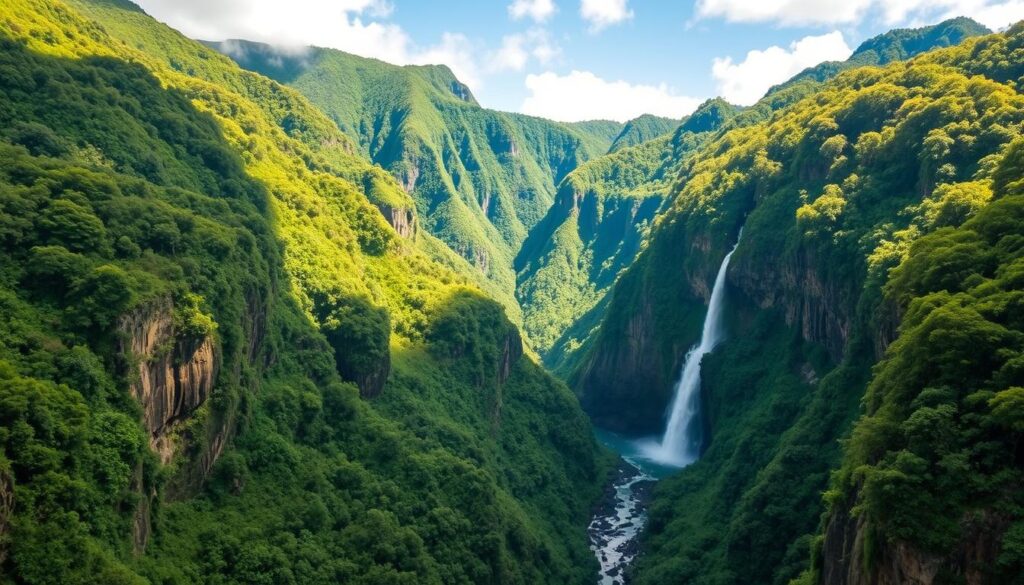
Hawaii’s islands boast stunning, tropical rainforests teeming with life. Visitors can immerse themselves in these verdant landscapes. They can trek through the breathtaking Waipio Valley on the Big Island. Here, they’ll discover hidden waterfalls, crystal-clear streams, and towering cliffs.
These pristine landscapes offer a glimpse into the untamed beauty of the Hawaiian Islands. They provide an opportunity to connect with the natural world.
Trek Through Waipio Valley’s Pristine Landscapes
The Waipio Valley on the Big Island is a hidden gem. It’s a lush, secluded oasis inviting visitors to explore its pristine landscapes. Hikers can traverse steep trails, passing by cascading waterfalls and meandering streams.
While taking in the dramatic views of towering cliffs, they witness the valley’s untamed wilderness. This raw, natural beauty defines the Hawaiian Islands.
| Statistic | Value |
|---|---|
| Native and Endemic Species in Hawaii | Over 21,000 (11,000 native and 10,000 endemic) |
| Endemic Plant Species in Hawaii | 1,150 out of 3,000 total |
| Native Bird Species on Kauai | 63 out of 294 total |
| Hawaiian Monk Seal Population | Less than 1,500 |
Pristine Beaches and Marine Life
Hawaii’s coastlines are adorned with stunning, palm-fringed beaches and vibrant marine ecosystems. Visitors can witness the graceful movements of spinner dolphins as they frolic in the turquoise waters. They can also spot the iconic green sea turtles basking on the shores. These unique marine encounters allow travelers to connect with Hawaii’s diverse and delicate underwater world. This fosters a deeper appreciation for the islands’ natural wonders.
Swim with Spinner Dolphins and Green Sea Turtles
The Hawaiian waters are home to a variety of captivating marine species. Spinner dolphins, known for their acrobatic leaps and spins, can often be spotted during dolphin-watching tours along the coast. These intelligent creatures are a joy to observe in their natural habitat.
Green sea turtles, or “honu” as they are known locally, are a iconic symbol of Hawaii. Weighing up to 400 pounds, these gentle giants can be seen basking on the pristine beaches or gracefully swimming through the crystal-clear waters. Snorkeling or swimming alongside these magnificent creatures is a truly awe-inspiring experience.
| Marine Species | Average Size | Conservation Status |
|---|---|---|
| Green Sea Turtle | 150-400 pounds | Threatened |
| Hawksbill Turtle | 75-150 pounds | Critically Endangered |
| Spinner Dolphin | Up to 7 feet, 600 pounds | Least Concern |
| Hawaiian Monk Seal | Up to 7 feet, 600 pounds | Endangered |
Hawaii’s marine ecosystems are delicate and in need of protection. Responsible tourism and conservation efforts are crucial. They ensure the survival of these unique species and preserve the pristine beaches for future generations to enjoy.
Island Biogeography and Endemic Plants
The Hawaiian Islands’ isolated location and unique geological history have given rise to an astounding array of endemic plant species found nowhere else on Earth. Visitors can explore the islands’ lush forests and discover the iconic ‘ōhi’a lehua tree, with its vibrant red flowers, as well as the towering hāpu’u ferns that thrive in the understory.
Discover Unique Flora Like ‘Ōhi’a Lehua and Hāpu’u Ferns
These endemic species play a vital role in the islands’ delicate ecosystems, and their preservation is crucial for maintaining Hawaii’s rich biodiversity. The main islands of the Hawaiian archipelago have been above the ocean’s surface for less than 10 million years. This has enabled unique biological colonization and evolution processes.
Out of a total of 2,690 plant species in Hawaii, 946 are non-indigenous, and 800 of the native species are listed as endangered. Many remaining endemic plant and animal species in Hawaii are considered endangered, with some critically endangered. The Hawaiian Islands formed linearly from northwest to southeast, with Kauai being approximately 5.1 million years old, Oahu around 3.7 million years old, and the youngest island of Hawaii about 0.43 million years old.
Human contact, particularly by Polynesians and Europeans, has led to significant impacts on native forests and species in Hawaii. Several species of terrestrial animals in Hawaii are listed as endangered, critically endangered, near threatened, vulnerable, extinct, or critically endangered/extinct. This indicates the delicate state of the island’s wildlife.
Sustainable Tourism and Conservation Efforts
Hawaii, a top tourist spot, must balance its natural beauty with visitor needs. Yet, it leads in sustainable tourism and conservation efforts. Local groups and organizations strive to safeguard its delicate ecosystems and unique species.
The islands are home to 8 National Parks, 51 state parks, and numerous nature reserves for hiking. These areas highlight Hawaii’s vast natural riches. However, 70% of Hawaii’s coastline is threatened by climate change. To counter this, Hawaii has launched conservation programs. These include Marine Life Conservation Districts and Fisheries Management Regions, showing its dedication to environmental protection.
Travelers can adopt responsible travel habits. This includes respecting wildlife, reducing environmental impact, and backing eco-friendly projects. Doing so helps preserve Hawaii’s natural beauty for the future. Many hotels and restaurants in Hawaii also support sustainability. They use practices like towel reuse and locally sourced ingredients, aiding the state’s green tourism goals.
| Sustainable Tourism Initiatives in Hawaii | Key Features |
|---|---|
| Aloha+ Challenge | Stakeholders committed to principles aligned with the United Nations Sustainable Development Goals |
| Eco-friendly Tour Operators | Contribute a portion of profits towards conservation activities, such as tree planting and environmental preservation efforts |
| Reef-safe Sunscreen Availability | Stores offering reef-safe sunscreens on Oahu, Kauaʻi, Maui, and the Big Island |
| Eco-friendly Vacation Rentals | Offerings from companies like Hawaii Life across Maui, Oahu, Kauaʻi, and the Big Island |
By embracing sustainable tourism and supporting conservation efforts, travelers can significantly contribute to preserving Hawaii’s natural wonders for future generations.
Stargazing from Mauna Kea
Atop the Mauna Kea volcano, visitors find themselves in awe of Hawaii’s night sky. This dormant volcano, revered in Hawaiian culture, hosts some of the world’s leading astronomical observatories. It offers unmatched views of stars, planets, and galaxies. Stargazing here is a deeply moving experience, connecting travelers with the natural world in a unique way.
Mauna Kea’s summit, at 13,796 feet (4,205 meters), is the tallest mountain from its base on the ocean floor. Its high altitude and clear skies make it perfect for stargazing and astronomy. It’s a haven for those who seek to explore the night sky.
The Maunakea Visitor Information Station is open daily from 12:00 pm to 10:00 p.m. It’s a key stop for those heading higher, helping them acclimate to the high altitude. Altitude sickness is a risk at 14,000 feet, with 40% less oxygen than sea level. Thus, acclimatization is crucial.
| Location | Altitude (feet) | Oxygen Levels |
|---|---|---|
| Maunakea Visitor Information Station | 9,200 | 60% of sea level |
| Maunakea Summit | 13,796 | 40% of sea level |
For the best stargazing, arrive at the summit just before sunset. From there, witness the sky’s transformation into a celestial wonderland. Several companies, like Mauna Kea Summit Adventures and Arnott’s Famous Lodging and Adventures, offer guided tours. They ensure a safe and educational journey to this natural marvel.
Cultural Connections and Hawaiian Traditions
The natural wonders of Hawaii are deeply intertwined with the islands’ rich cultural heritage and spiritual traditions. Visitors can explore the legendary figures, such as the goddess Pele, who are believed to have shaped the landscapes and ecosystems of the Hawaiian Islands. Hiking through the dramatic Kalalau Valley on Kauai, for example, offers a chance to immerse oneself in the legends and spiritual beliefs that have been passed down through generations of Hawaiians. This fosters a deeper appreciation for the islands’ natural and cultural treasures.
Explore the Legends and Spiritual Significance
Native Hawaiians have inhabited the Hawaiian Archipelago for thousands of years, demonstrating a long-standing connection to the islands. The ocean played a crucial role in their traditions, with the ocean being divided into numerous smaller divisions and serving as a significant resource for their physical and spiritual sustenance. The Northwester Hawaiian Islands are considered a sacred place in Hawaiian traditions, with a rich history passed down through oral and written sources such as genealogies, songs, dance, and archaeological resources.
During the Hawaiian Cultural Renaissance in the 1970s, Native Hawaiians protested the bombing of Kanaloa/Kahoʻolawe by the U.S. military, highlighting their deep reverence for the natural environment. The double-hull voyaging canoe, Hōkūleʻa, has sailed thousands of miles across the world since the 1970s, reconnecting Native Hawaiians with their ancestral seafaring traditions.
Today, Native Hawaiians maintain deep connections to the Northwestern Hawaiian Islands on genealogical, cultural, and spiritual levels, with cultural practitioners continuing to honor their ancestors through traditional practices. The Hawaiian Islands Humpback Whale National Marine Sanctuary has developed meaningful relationships within island communities and with Native Hawaiians committed to perpetuating Hawaiian culture.
The natural wonders of Hawaii are not only a physical manifestation of the islands’ beauty but also a reflection of the rich cultural and spiritual significance that has been woven into the landscape for generations. By exploring the legends and traditions of the Hawaiian people, visitors can gain a deeper understanding and appreciation for the unique character of these remarkable islands.
Ecotourism Adventures and Responsible Travel
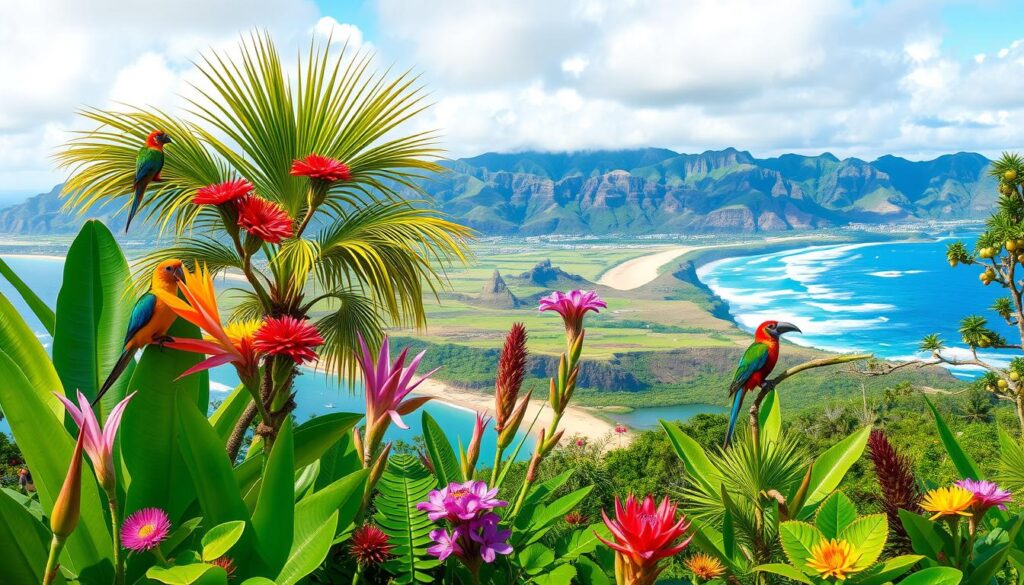
Exploring Hawaii’s natural wonders through ecotourism and responsible travel offers a transformative journey. It allows visitors to engage in activities that reduce environmental harm, support local conservation, and deepen their connection to the ecosystems. This way, they become active guardians of Hawaii’s precious resources.
Activities range from eco-friendly hikes and educational tours to sustainable accommodations and zero-waste initiatives. These opportunities enable travelers to experience the islands’ beauty while contributing to their preservation.
Hawaii is known as “The Endangered Species Capital of the World,” with over a third of U.S. endangered species found there. Protecting these species and their habitats is vital. Responsible travelers can significantly impact this by making informed choices and taking action.
| Ecotourism Activity | Description | Price (Ages 10-12) |
|---|---|---|
| UTV Raptor Ride | A 3-hour guided tour through Kualoa Ranch’s land stewardship and native plant restoration efforts | $199.95 |
| Ultra E-Bike Tour | A 3-hour challenging and technical ride experience through the valleys | $179.95 |
| Zipline Tour | A 2-hour tour spanning 7 tandem sections and 2 suspension bridges, with views of native flora and fauna | $179.95 |
| Horseback Tour | A 2-hour guided walking tour providing a view of the valleys and pastures like a Hawaiian Cowboy | $149.95 |
By opting for these ecotourism activities, travelers support local conservation, lower their carbon footprint, and appreciate the sustainable practices crucial for Hawaii’s environmental protection.
Island Hopping: Diverse Natural Wonders
The Hawaiian Islands present a stunning array of natural diversity. Each island boasts its own distinct ecosystems, landscapes, and wildlife. An island hopping journey allows travelers to delve into these wonders. From the Big Island’s majestic volcanoes to Kauai’s lush rainforests, Maui’s pristine beaches, and Oahu’s cultural treasures, this adventure reveals Hawaii’s true essence.
The distance between islands shapes your itinerary. Some, like Maui and Lanai, are close enough for a short ferry ride. Others, such as Oahu and the Big Island, require a flight to cover the roughly 200-mile gap. Interisland flights in Hawaii are swift, lasting from 20 to 50 minutes, making air travel a convenient option for exploring different islands.
Island hopping by plane or ferry offers unique experiences for all interests. From Kona’s volcanic landscapes and coffee farms to Hilo’s waterfall-rich and tropical-flower-adorned beauty on the Big Island, the adventure is vast. With eight main islands in the Hawaiian archipelago, the possibilities for exploration are limitless, inviting travelers to a journey of unparalleled natural wonders.

Scott Sweeney is the creator of Virtual Hawaii 360. Scott is a professional marketer and a lifelong Hawaii enthusiast. Scott splits time between Oahu and Dayton, Ohio. In addition to his marketing endevours, he is also a published Ukulele musician.

